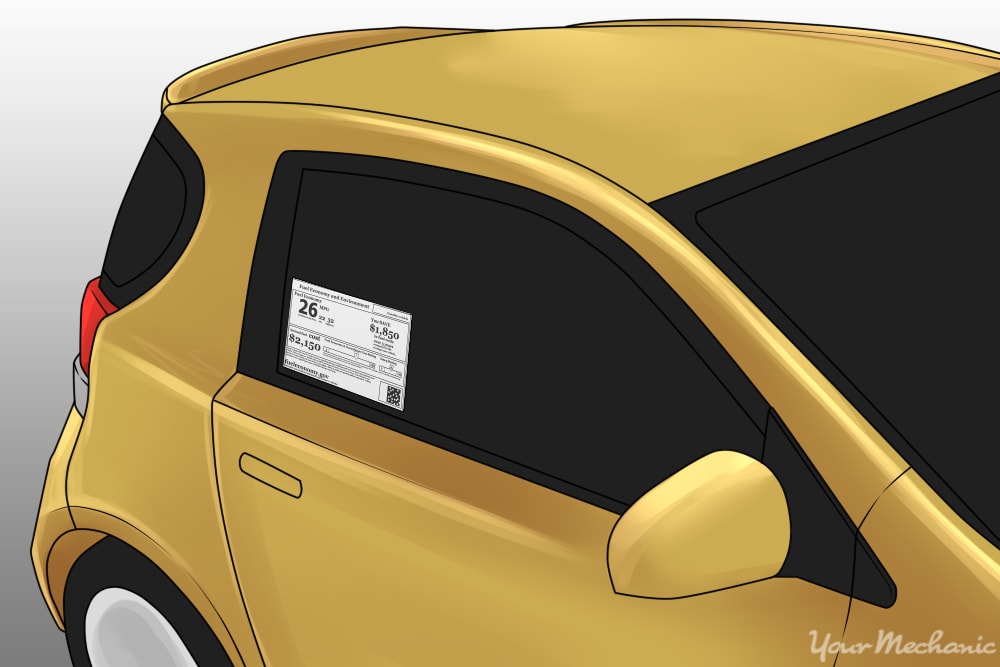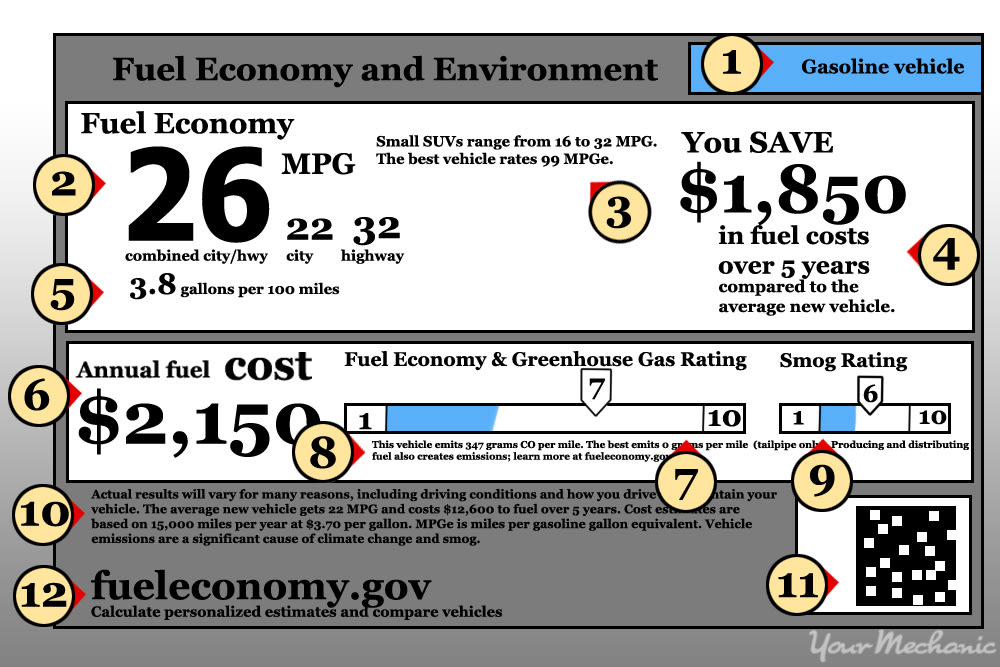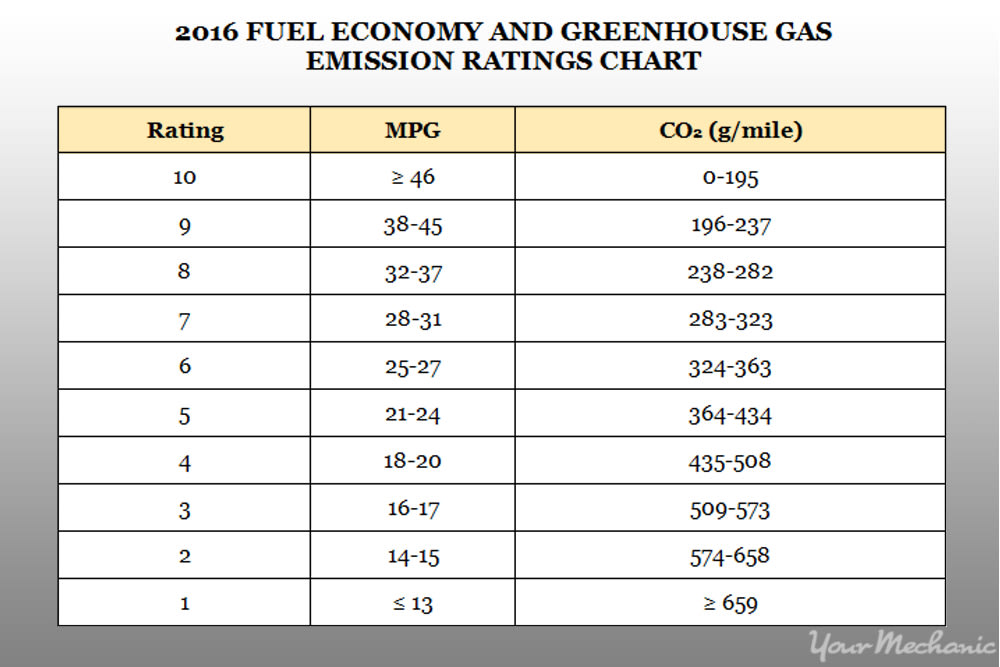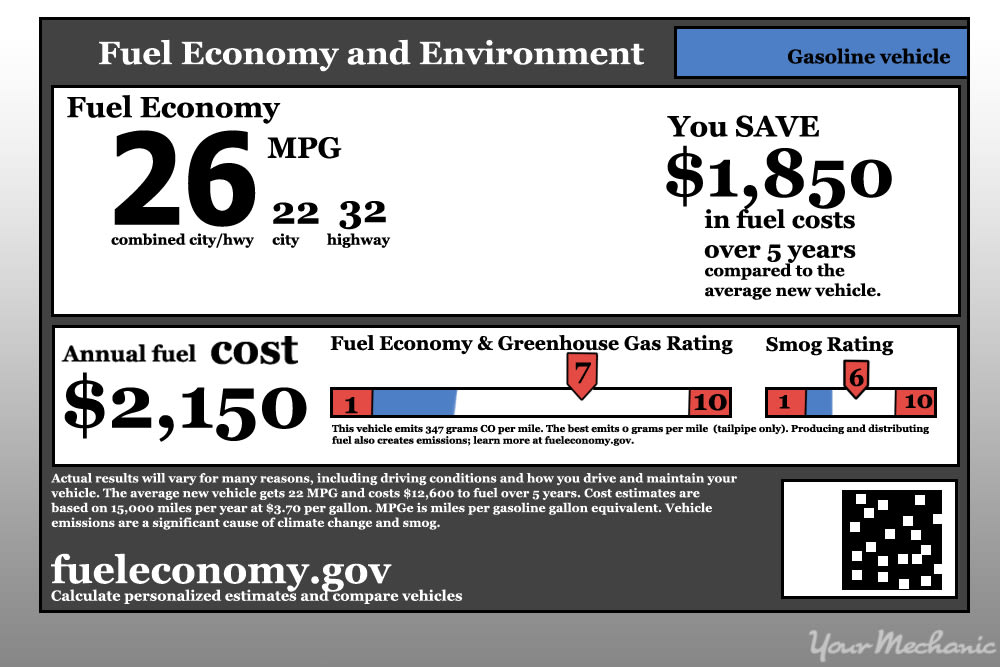

The Environmental Protection Agency (EPA), in conjunction with the National Highway Safety Administration (NHTSA), puts out a series of labels for motor vehicles of varying fuel types. The labels allow car shoppers to compare the various fuel mileage numbers for vehicles they are interested in buying.
In order to understand the EPA fuel economy labels, you need to know what the various sections and terminology on the label refer to, including miles per gallon when driving in the city or on the highway, how much the vehicle can save you on fuel costs over a five-year period, and the vehicle's rating according to how much pollution it produces in comparison to other vehicles.
Part 1 of 2: The EPA fuel economy label
In addition to the fuel mileage numbers for a vehicle, the EPA fuel economy label also tells you how much the vehicle can save you in fuel costs over the course of five years. In order to better understand what the numbers mean, you need to know why the EPA fuel economy label was created, and where to find it when purchasing a motor vehicle.
Step 1: Know the purpose of the label. EPA fuel economy testing was implemented in 1972.
This testing was designed to measure emissions from vehicles at the time, and was displayed in the form of labels stuck to the windows of vehicles at car lots nationwide.
New data and faster vehicle speeds led to the EPA adjusting test figures in the early 1980s. In 2008, the EPA adopted three additional tests to help them determine the emissions from vehicles traveling at more modern speeds.
The labels applied to vehicles that show the test data - so that consumers can make a more informed buying decision when shopping for a vehicle - were also updated in 2008.
Step 2: Locating the fuel economy label. When shopping for a new vehicle, you can find the EPA fuel economy label attached to one of the rear windows of a vehicle.
Just look for a white piece of paper that has Fuel Economy and Environment printed across the top.
It should also have the fuel mileage for both driving on the highway and in the city on it, as well as a dollar amount of how much you can expect to save over a five-year period when driving the vehicle.
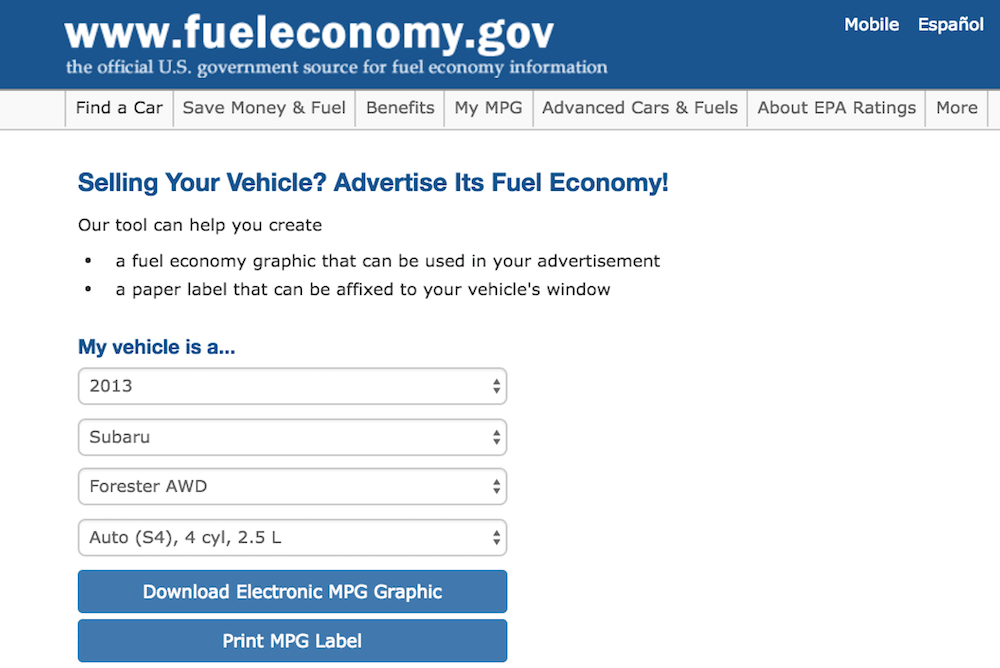
Step 3: Finding fuel economy information in other locations. In addition to dealerships displaying EPA fuel economy labels on the vehicles they sell, you can also find EPA information about vehicles online.
Visit the U.S. government’s website for fuel economy information to find a tool useful in looking up a vehicle's fuel economy.
Part 2 of 2: How to read an EPA fuel economy label
Knowing how to accurately read an EPA fuel economy label can help you decide which vehicle is right for your specific needs. Using the label, you can differentiate between the fuel mileage each individual vehicle offers and its impact on the environment.
Section 1: Vehicle fuel type. This section lists the fuel type used in the vehicle in question, as well as other technology the vehicle uses. In addition to text signifying the fuel type, you should also see a related icon.
Some of the fuel types you may encounter include:
- Compressed natural gas vehicles
- Diesel vehicles
- Electric vehicles
- Flexible-fuel vehicles: gasoline-ethanol (E85)
- Gasoline vehicles
- Hydrogen fuel cell vehicles
- Plug-in hybrid vehicles: electricity-gasoline
Section 2: Fuel economy. For a gasoline-powered vehicle, the label shows a highway, city, and combined MPG value.
When comparing vehicles, the combined MPG is the easiest way to see which vehicles have an overall higher MPG value. When figuring the combined MPG, the value is gained by weighing the highway value at 45 percent and the city value at 55 percent.
Section 3: Fuel economy comparison. This section weighs the vehicle's MPG in comparison to other vehicles in its category, and against other vehicle types.
When comparing non-liquid fuel-burning vehicles to their fuel-burning counterparts, the label displays the miles per gallon of gasoline equivalent, or MPGe. The MPGe value represents the number of miles that the vehicle can travel using a quantity of fuel, liquid or otherwise, with the same energy potential as a comparable gallon of gasoline.
Section 4: Fuel cost savings. This section lists the fuel savings, in a dollar amount, that you can expect to save over a five-year period when driving the vehicle in comparison to a new vehicle.
If the vehicle costs more to drive than the average vehicle, the label should state that a vehicle operator can expect to spend more in fuel costs over five years when compared to the average vehicle.
Section 5: Fuel consumption. This section lists how much the vehicle owner can expect the vehicle to consume in gallons of gasoline for every 100 miles driven.
This gives a more accurate estimate of how much fuel a vehicle uses when compared to other vehicles.
Section 6: Estimated annual fuel cost. This section gives an estimate of how much it should cost to put fuel in a vehicle over a year's time.
This figure is dependent on the average price of gasoline, and on the owner driving the vehicle an average of 15,000 miles a year.
Section 7: Fuel economy and greenhouse gas rating. This section lists the fuel mileage and greenhouse gas emissions of a vehicle on a scale from 1 to 10, with 10 being the best and 1 being the worst.
The carbon dioxide emissions are based on how much the vehicle's tailpipe emits in a mile.
Section 8: CO2 Emissions Information. This section details how the vehicle compares to others when it comes to tailpipe CO2 emissions.
The text details the combined city/highway CO2 tailpipe emissions in grams per mile, and the lowest tailpipe CO2 emissions of available vehicles.
Section 9: Smog rating. The smog rating rates the vehicle according to the amount of pollutants it emits.
The ratings run from 1 (the worst) to 10 (the best), and are based on U.S. emission standards.
Vehicles that run on electricity only have a smog rating of 10, since the tailpipe emissions are zero.
Section 10: Fine print. Found at the bottom of the label, the fine print reminds vehicle owners that fuel economy and vehicle emissions can vary according to a number of different factors.
The factors include:
- How you drive and maintain your vehicle
- Air conditioner use
- Use of other vehicle accessories
- Prevailing weather
- Road conditions
- Any vehicle load
Section 11: QR code. While shopping for a vehicle, scan the QR code on the EPA fuel economy label with your smartphone to gain access to additional information about the vehicle.
In order to scan the QR code, you need to download a scanner app. You can find such apps in the Apple Store for the iPhone, or on Google Play for Android devices.
Section 12: Fueleconomy.gov. At the very bottom left-hand side of the label, you can find the FuelEconomy.gov website address.
This site allows you to compare vehicles and enter personalized information, such as local gas prices or individual driving habits. By entering this information, you can get a better idea of how much it should cost to fuel the vehicle and how what kind of fuel mileage you can expect from your driving habits.
Comparing vehicles when shopping around can take time. Luckily, the EPA fuel economy label makes the process easier, allowing you to compare vehicles according to projected fuel mileage, how much it should cost you to fuel them, and their impact upon the environment according to its CO2 emissions. If you have any questions about how to improve your vehicle's fuel economy, Ask a Mechanic to find out more.


